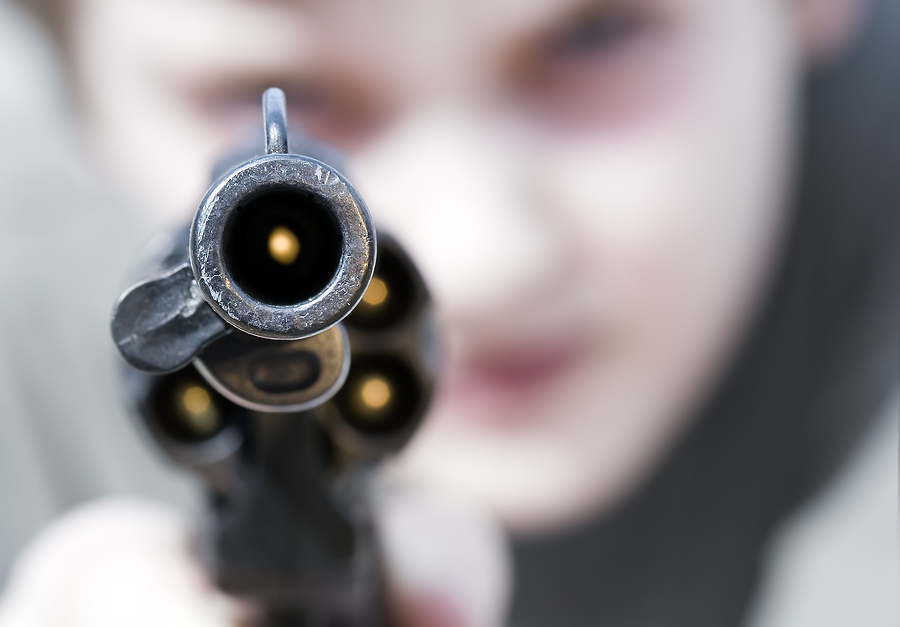
Another Look at Guns in Schools: Liability
South Dakota became the first state to enact a law explicitly authorizing school employees to carry guns on the job. Several other states already have provisions in their laws — or no legal restrictions — that make it possible for teachers to possess guns in the classroom. In fact, a handful of school districts do have teachers who carry firearms. Eighteen states allow adults to carry a loaded gun on school grounds, generally provided that they have written permission from an administrator or the school board. Only some of those laws specify reasons for giving teachers or adults the authorization to carry a firearm.
The American Federation of Teachers and the National Education Association have campaigned against such measures, but not all teachers and administrators share their position. In Tennessee, the membership of Professional Educators of Tennessee, a nonunion professional organization, is split about 50-50 on proposals like this. J.C. Bowman, a spokesman for the organization, told reporters in Chattanooga, “Some don’t want the responsibility, and they worry about liability.”
School liability for injury from guns
Liability, the legal responsibility for damages, is a real concern whenever something can possibly cause harm to a person. Poorly designed playgrounds, heavy televisions not properly strapped to a TV cart, poorly lighted parking lots — and guns — all present a risk of harm to kids and staff. Take, for example, the potential for harm when a security officer left a firearm unattended in a Michigan charter school bathroom. The school claimed that no children were in danger. Was there a risk of harm?
From a liability perspective, consider this potential scenario: What if two students went into the bathroom when the gun was left there? One student picks up the gun and, out of curiosity, pulls the trigger, shooting and seriously wounding — or worse, killing — his classmate. How would that situation play out in terms of negligence? Would the school be liable? Negligence is the failure to exercise the standard of care for the wellbeing of others that a reasonable and prudent person would exercise under similar circumstances. If this school employee breached his legal duty to protect students from an unreasonable risk of injury by leaving his gun in the bathroom (negligence) and a student was harmed (proximate cause), would the school be liable for the security guard’s negligence?
In the wake of the shootings at Sandy Hook Elementary School, one Pennsylvania state representative proposed that with proper training and certification, teachers should be allowed to carry guns in classrooms. The security officer’s actions in Michigan, however, raise questions of whether he was properly trained and whether his superior or principal appropriately supervised him. Appropriate and adequate training and supervision are elements, once demonstrated, that can help to protect a school from liability stemming from an employee’s negligence. If the board of education, for instance, approved a rigorous training program that attuned the security officer to the risks firearms in school and how to protect students and others from harm, the court may be convinced that the school provided appropriate training. The school, then, might not be found liable if the officer fails to exercise proper control of his weapon, in violation of school policy.
The National Rifle Association has called for arming school security officers. Could more guns in schools prevent another Sandy Hook, or does it create opportunities for negligent behavior and school liability? Does it really help our kids feel safe at school?
Some students and teachers say that placing cops in schools to keep kids safe often has the opposite effect — it intimidates students. In effect, it makes the police the de facto disciplinarians in schools. Some students have voiced the feeling that they’re walking into a prison every time they enter their schools patrolled by armed police officers. One student dropped out of school because her backpack and pockets were searched every time she came to school.
The National Association of School Resource Officers, a training organization for police officers who work in schools, received more than double the normal requests for training after the Newtown tragedy. Properly trained school resource officers (SROs), working with school employees and students, can help to create a safe school environment. Susquehanna Township, Pa., Police Chief Rob Martin, whose department has assigned an SRO to the Susquehanna Township School District for the past 7 years, told the Harrisburg Patriot-News that staffing a school with an SRO “is about helping them, counseling them, guiding them through a very tough period in their lives.” It’s not, he added, about arresting kids or finding kids in trouble. When part of an effective school safety team, SROs can benefit schools and develop positive bonds with students. The officers can train faculty and staff to deal with emergencies, help to develop safety plans, conduct safety drills, and teach students about personal safety. SROs can also humanize police who are in the school on a regular basis and are there to kelp kids.
But it can also go very wrong.
David came to his middle school with a knife some described as a machete. He walked into the SRO’s office, a 9-by-12-foot space with a desk, chairs, and a filing cabinet. He approached the SRO and, according to the officer, threatened him with the knife. Several teachers watched events unfold through a window but were helpless to intervene. The student was shot 12 times by the officer, who never even attempted to leave the room for his own safety. The student had a behavioral disorder and was in a special class where he received behavior modification and counseling. His teachers knew how to use strategies to calm David, “disarm” him emotionally, and even to take the knife from him.
The school never communicated this information to the SRO, who acted in a negligent way by all standards. Is the school now liable for this student’s death? In this case, the key question becomes whether the school adequately trained the SRO regarding the needs of the student and how to deal with his behavior. If it did not, the school may be vulnerable to liable for the actions of its SRO.
This incident raises an important consideration in any discussion about arms in schools: Whether a school provides appropriate training in interactive skills between students and staff.
In a small private school for children with behavioral disorders, a high school student acted out violently after his teacher directed him to do something that he didn’t want to do. The student rampaged through the school and into the parking lot, brandishing a pair of scissors. The school called 911, and three local police officers confronted the student as he ran from the school. “Put down the weapon,” the police commanded. “Put down the weapon. Put down the weapon.” The student ran toward the officers. According to police procedure, one of the officers shot and killed the student.
The town and its police department were exonerated because, according to the judge, the procedure met the standard in the field of police work and the officer acted in accordance with the standard. The school, however, severely missed the mark. The school through its teacher, counselors and administration, created a situation that caused this student to snap — leading to a situation requiring the police to “control” him and ending in tragedy. In this situation, even though school personnel carried no weapons and did not shoot the boy, it was sued for negligent supervision of the student alleging its failure to act in a way to protect the student from harm. The school filed for summary judgment which was granted by the court.
Key issues: training, risks, and obligation
Is security a state of illusion? Are there risks of liability if things go wrong? These are serious questions that schools need to explore. Of course, there are liability risks. If something goes wrong, what should an attorney review? One of the most important elements is training. Was the person carrying the weapon appropriated trained? What did that training consist of? Was the person informed about specific students and how the staff deals with them so that the student doesn’t escalate the danger to a point of no return? Is there a risk of calling the police to handle a student when the police don’t know the student but the school possesses the skills to “talk the student down?”
Preventing school-related injuries is an ethical and legal obligation for schools. Whether arming school personnel increases or decreases this risk is a matter of debate. It also raises important questions about the type of culture we want to cultivate in schools. Because a wide range of injuries are litigated and often require schools to pay costly awards to injured parties, the issue of guns in schools takes on even greater importance.


